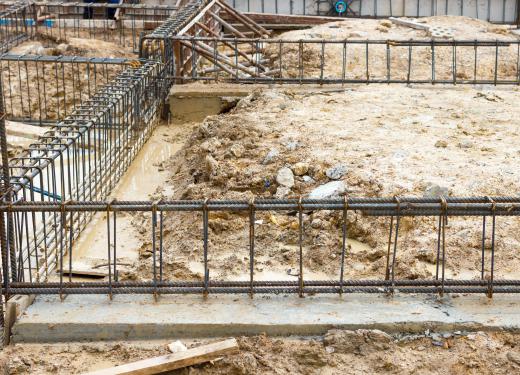Hydrodemolition is the use of powerful jets of water to break up deteriorating concrete and cement without damaging neighboring materials. Construction companies began using this technique in Europe in the 1970s, primarily for restoration and refinishing projects where crews needed to be able to remove damaged material while leaving a structure intact. People can use this demolition method on buildings, bridges, roadways, and other structures made from concrete like sidewalks and storm drains.
In hydrodemolition, a cutting head attaches to a machine capable of generating extremely powerful blasts of water. The water can skim the surface to remove an upper layer of concrete or penetrate more deeply to cut through walls and other materials. The surrounding material will remain intact, and water keeps dust down, making the job site safer. Construction crews use vacuums to recycle the water and collect debris as they work, which makes cleanup very easy.

After hydrodemolition, a surface is often immediately ready for restoration and needs no additional treatment. Construction workers can inspect rebar and other supports to see if any need replacement before proceeding with a fresh pour. This cuts down on working time substantially. With jackhammering, another method of concrete removal, people must remove debris and resurface the material to get it ready for restoration. This adds considerably to work time and workers also need to cope with high dust levels, a potential health hazard, especially when concrete contains toxic fillers or inclusions.

Construction crews primarily use this technique to break up old, damaged material including bricks and mortar held together with decaying grout. They can also use it on perfectly serviceable surfaces if it becomes necessary to remove layers of material to retrofit or perform other work. The hydrodemolition team will meet with a contractor to discuss the needs of the project, determine the best equipment to use, and set up a demolition plan.
This work can be dangerous. While it is not as noisy as jackhammering, ear protection is still necessary. The jets of water are very strong and may cause severe injuries. People must use caution while working around a hydrodemolition site in addition to wearing protective gear like steel-toed boots and body armor. In the case of people working with hand-held tools rather than an automated cutting head, workers need plenty of clearance in case they lose control, as being hit with a jet of water powerful enough to cut through concrete can be fatal.
Ever since she began contributing to the site several years ago, Mary has embraced the exciting challenge of being a About Mechanics researcher and writer. Mary has a liberal arts degree from Goddard College and spends her free time reading, cooking, and exploring the great outdoors.

